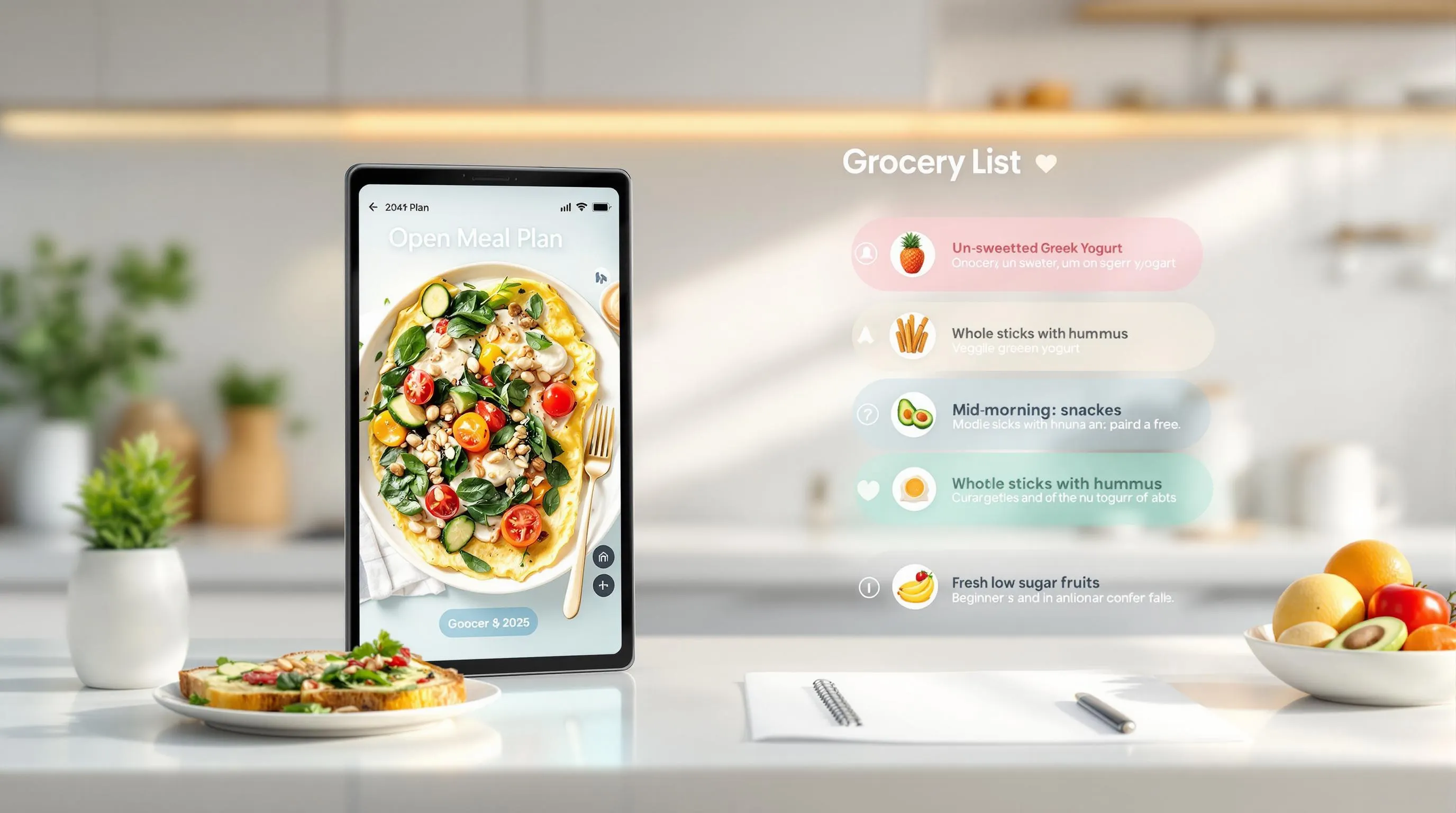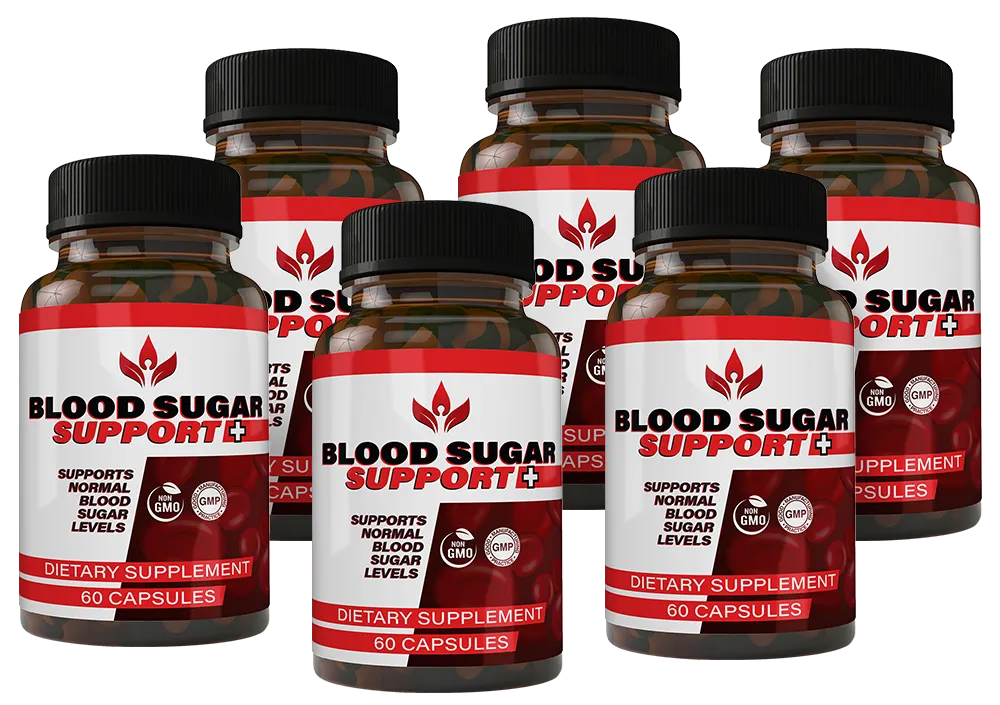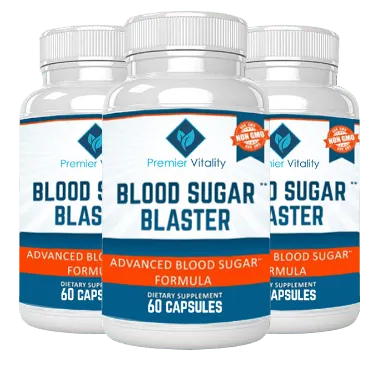How to Start a Sugar-Free Diet in 2025: A Beginner’s Meal Plan + Grocery List

Starting a sugar‑free diet in 2025 doesn’t have to be overwhelming. If you’re ready to cut out added sugar, detox your body, and adopt a cleaner style of living, you’re in the right place. In this comprehensive guide, we’ll walk you through how to start a sugar‑free diet, provide you with a practical beginner meal plan, and offer an organized grocery list to make your transition as smooth as possible. Whether you’re looking to stabilize your blood sugar or simply embrace a lifestyle of healthy eating, our step‑by‑step guide is designed for beginners and seasoned healthy eaters alike.
In today’s world—where food choices are vast and often laden with hidden sugars—there’s never been a better time to embrace sugar elimination. Research shows that reducing your sugar intake can lead to improved energy levels, reduced inflammation, and better overall metabolic health (Harvard Health, 2022). This article combines the latest research with clear, simple advice to help you start sugar‑free diet easily and effectively. Let’s dive into the benefits, meal planning strategies, expert tips, and more.
Understanding the Benefits of a Sugar-Free Diet
A sugar‑free diet, or a diet with no added sugar, is more than just a passing trend. It’s a scientifically backed approach to improving your overall health. By deciding to intentionally remove refined and hidden sugars from your diet, you are not only opting for clean eating but also setting the stage for long‑term benefits such as improved blood sugar regulation and reduced risk of chronic diseases.
Why Choose a Sugar‑Free Diet?
The average American consumes almost 77 grams of sugar daily—far exceeding the recommended daily limit (American Heart Association, 2021). Excess sugar contributes to weight gain, inflammation, and even chronic illnesses like type 2 diabetes. Here are some scientifically supported benefits of starting a sugar‑free diet:
- Improved Energy Levels: By avoiding sugar crashes, you maintain steady energy throughout the day.
- Enhanced Blood Sugar Balance: Eliminating sugar can help regulate insulin levels and reduce the risk of diabetes.
- Better Heart Health: Studies have shown that reducing sugar intake can lead to lower levels of bad cholesterol and blood pressure (Mayo Clinic, 2020).
- Reduced Inflammation: A diet low in sugar helps decrease inflammatory markers in the body, leading to improved overall wellness.
Research and Data on Sugar Elimination
Recent studies have demonstrated that reducing refined sugar in the diet correlates with better metabolic markers. For example, a 2023 study in the Journal of Nutrition found that individuals following a sugar‑free diet experienced a significant drop in fasting blood sugar levels. These findings suggest that even modest sugar detox efforts can yield measurable health benefits.
Furthermore, the World Health Organization (WHO, 2022) recommends that reducing free sugars to less than 10% of your daily energy intake can reduce the risk of noncommunicable diseases. With such compelling evidence, it’s clear why more people are choosing to embark on a sugar‑free journey.
How to Start a Sugar-Free Diet: Step-by-Step Guide
Taking the plunge to start a sugar‑free diet may seem intimidating at first, but with clear steps and a well‑designed beginner meal plan, you can transform your health one day at a time. Below are practical steps and tips to help you begin your sugar detox journey.
Step 1: Set Clear Goals
Before you start, ask yourself why you want to start a sugar‑free diet. Do you want to manage your blood sugar levels better, improve your energy, or lose weight? Your goals will shape your approach. Write down your personal objectives and decide on realistic milestones.
Step 2: Educate Yourself on Hidden Sugars
Understanding food labels is crucial when eliminating sugar. Many processed foods contain hidden sugars under names like maltose, dextrose, or high‑fructose corn syrup. Familiarize yourself with these terms so you can make healthier choices. For further reading, check out our article on Sugar‑Free Desserts to learn how even your sweet treats can be made without added sugars.
Step 3: Remove Temptations
Clear out your pantry and fridge of sugary snacks. If you’re serious about starting this sugar‑free diet, having a supportive environment is key. Dispose of foods and beverages high in sugar, and replace them with whole foods rich in nutrients.
Step 4: Plan Ahead
A well–structured beginner meal plan takes the guesswork out of meal times. Prepare your meals in advance, and have a grocery list ready to ensure you’re stocked up with sugar‑free ingredients. Detailed meal prepping is a powerful tool for clean eating and sticking to your goals.
Step 5: Embrace a Gradual Transition
You need not cut out sugar overnight. Consider starting your sugar detox gradually. Replace high‑sugar items with healthier alternatives over a week or two. This approach minimizes withdrawal symptoms and gives your body time to adapt.
Step 6: Monitor Your Progress
Keep a food journal to track your meals, energy levels, and any cravings you experience. Over time, you’ll notice improvements in both your physical and mental well‑being. Adjust your meal plan if necessary and celebrate your progress.
Step 7: Seek Support and Expert Guidance
Join online communities or local support groups focused on clean eating and sugar elimination. Sharing experiences and tips with others on a similar journey can be incredibly empowering. To further assist you, explore our New Blood Sugar Support page for additional insights into managing blood sugar levels naturally.
Your Beginner Meal Plan: A Complete Guide to Clean, Sugar‑Free Eating
A beginner meal plan is a powerful tool to set you on the right path. The following sample meal plan is designed to help you start a sugar‑free diet without feeling deprived. It focuses on whole, nutrient‑dense foods that support clean eating and steady energy levels throughout the day.
Daily Meal Plan Overview
Below is a sample daily schedule that includes breakfast, lunch, dinner, and snacks. This plan is designed for beginners and can be easily modified to meet your specific needs.
Breakfast
A nutritious breakfast sets the tone for your day. Start with foods that help balance blood sugar and provide long‑lasting energy. Consider:
- A vegetable omelet made with spinach, bell peppers, and tomatoes cooked in olive oil.
- A bowl of plain Greek yogurt (unsweetened) topped with a handful of mixed nuts and seeds.
- A slice of whole‑grain toast served with avocado and a sprinkle of salt and pepper.
These options are low in added sugar and packed with protein, fiber, and healthy fats. For a quick tip on sugar‑free meal prep, check out our article on Blood Sugar Blaster.
Mid‑Morning Snack
Keep your energy levels stable with a small snack. Some good choices include:
- Fresh veggie sticks with hummus.
- A piece of fruit such as an apple or pear (choose lower‑sugar fruits).
- A small handful of almonds or walnuts.
Lunch
Plan a balanced lunch with lean proteins, healthy fats, and plenty of fiber. Try:
- A large mixed salad with grilled chicken or tofu, drizzled with olive oil and lemon juice.
- A quinoa bowl with roasted vegetables, chickpeas, and a light tahini dressing.
- A wrap made with a whole‑grain tortilla, filled with turkey, lettuce, tomato, and avocado.
This meal not only supports your blood sugar but also keeps you full and focused throughout the afternoon.
Afternoon Snack
When hunger strikes again in the afternoon, reach for extras that maintain clean eating:
- Sliced cucumber or bell peppers with a sprinkle of sea salt and a side of guacamole.
- A boiled egg sprinkled with herbs.
- Unsweetened coconut chips or a small portion of edamame.
Dinner
Dinner is an opportunity to enjoy a hearty, balanced meal. Consider dishes like:
- Grilled salmon or a plant‑based protein substitute, accompanied by steamed broccoli, asparagus, and a serving of brown rice or quinoa.
- A stir‑fry with lean beef or tempeh, colorful vegetables, and a splash of low‑sodium soy sauce.
- A wholesome bowl of soup made from fresh vegetables and lentils, served with a side salad.
Finish your day with disciplines similar to those used throughout the day. A well‑balanced meal plan is key to long‑term success in your sugar detox journey.
Evening Snack (Optional)
If you need something before bed, choose from:
- A small portion of cottage cheese with sliced cucumbers or tomatoes.
- A herbal tea with a dash of lemon, free of any sweeteners.
This daily structure forms the backbone of your beginner meal plan, ensuring that your blood sugar remains balanced and your energy steady.
Sample Weekly Meal Plan and Grocery List
To simplify things further, here’s a sample outline of a weekly sugar‑free meal plan paired with a grocery list.
Weekly Meal Schedule Overview
Imagine planning for seven days, with the following daily components:
- Breakfast: Rotate between vegetable omelets, Greek yogurt bowls, and avocado toast.
- Lunch: Switch among salads, grain bowls, and wraps.
- Dinner: Alternate between grilled proteins, stir‑fry dishes, and hearty soups.
- Snacks: Keep a rotation of fresh vegetables, fruits, nuts, and simple boiled eggs.
Sugar‑Free Grocery List
When grocery shopping, focus on whole, unprocessed items. Consider these essentials:
- Fresh vegetables: lettuce, spinach, broccoli, bell peppers, cucumbers, tomatoes, and carrots.
- Low‑sugar fruits: apples, pears, berries, and avocados.
- Proteins: eggs, chicken breast, lean beef, tofu, tempeh, beans, and legumes.
- Whole grains: quinoa, brown rice, whole‑grain bread, and oats (unsweetened).
- Healthy fats: olive oil, avocado oil, nuts, and seeds.
- Dairy alternatives: plain Greek yogurt, cottage cheese, and unsweetened almond milk.
- Herbs & spices: turmeric, ginger, basil, garlic, and fresh herbs to enhance flavor without added sugar.
Ensure your pantry is kept free of processed snacks. For additional tips on clean eating and products to support your blood sugar, visit our Optimize Blood Sugar Products page.
Meal Prep Tips for a Successful Sugar-Free Journey
Planning ahead can make all the difference when you choose to start a sugar‑free diet. Incorporate meal prep into your routine to ensure you always have healthy options available. Here are some valuable meal prep sugar‑free ideas:
- Batch Cooking: Dedicate a few hours on the weekend to prepare proteins like grilled chicken, roasted vegetables, and quinoa. Store them in airtight containers so that during busy weekdays you can simply assemble a balanced meal.
- Smart Snacking: Portion out healthy snacks like veggie sticks, nuts, and boiled eggs into small containers. This prevents impulse purchases and ensures you’re never caught off guard by hunger.
- Menu Planning: Create a weekly menu that outlines each meal. This helps with grocery shopping and reduces the temptation to order in or grab sugary convenience foods.
- Freezer-Friendly Meals: Prepare soups, stews, and casseroles in bulk. Portion them into freezer‑safe containers so that you can enjoy a wholesome dinner with minimal effort.
Using these meal prep strategies, your journey towards a clean eating lifestyle becomes much simpler. For additional inspiration and innovative recipes, take a look at our post on Sugar Defender.
Overcoming Challenges and Common Misconceptions
Transitioning into a sugar‑free diet comes with its own set of challenges. It’s important to recognize these hurdles and address them with practical solutions.
Managing Cravings and Withdrawal
When you suddenly remove sugar from your diet, you may experience cravings or even mild withdrawal symptoms. Remember these tips to manage this phase:
- Stay hydrated. Drinking water can help reduce cravings and minimize feelings of hunger.
- Eat foods rich in fiber and protein. These help keep your blood sugar levels stable and reduce the intensity of sugar cravings.
- Give your body time. It often takes about two to three weeks for your taste buds to adjust to a low‑sugar diet.
Misconception: “All Fruits Are Too Sugary”
Fruits are a natural source of sugar, but they also come packed with essential vitamins and fiber. Focus on low‑glycemic fruits like berries, apples, and pears rather than tropical fruits which might be higher in sugar. Moderation is key, and understanding the natural versus added sugars is an important distinction on your journey.
Misconception: “A Sugar‑Free Diet Means No Sweet Treats”
Embarking on a sugar‑free diet doesn’t mean you have to give up sweetness entirely. There are many innovative recipes for sugar‑free desserts, including recipes that use natural sweeteners in minimal amounts. Explore our recipe ideas on Sugar‑Free Desserts to discover delicious alternatives.
Misconception: “It’s Only About Weight Loss”
While many turn to sugar elimination for weight loss, the benefits extend far beyond shedding pounds. Reduced sugar intake plays a crucial role in stabilizing blood sugar, improving cardiovascular health, and reducing inflammation. Embracing clean eating ultimately supports a healthier lifestyle overall.
The Science Behind Sugar Elimination
It’s important to back our advice with reliable scientific data. Several reputable studies highlight the impact of sugar on health and stress the importance of eliminating added sugars:
- A 2023 study in the Journal of Nutrition demonstrated that reducing sugar intake led to improved insulin sensitivity and decreased markers of inflammation in study participants.
- Harvard Health Publishing (2022) notes that excess sugar consumption is linked with higher rates of metabolic syndrome and cardiovascular diseases.
- The WHO (2022) recommends that lowering free sugar intake can reduce the risk of noncommunicable diseases.
This research not only supports the benefits of a sugar‑free diet but also emphasizes the necessity of a structured beginner meal plan to support your goals. A commitment to sugar detox and sugar elimination can transform your overall metabolic health and reduce your risk of chronic diseases.
Tips for Clean Eating and Healthy Eating Habits
Achieving a sustainable clean eating lifestyle goes hand‑in‑hand with your decision to start a sugar‑free diet. Here are a few additional tips to enhance your healthy eating habits:
- Plan Balanced Meals: Each meal should have lean proteins, healthy fats, and complex carbohydrates. This combination supports steady blood sugar levels and reduces cravings.
- Read Labels Carefully: Always check the ingredients list for hidden sugars. Even savory products can unexpectedly contain high amounts of added sugar.
- Opt for Whole Foods: Focus on natural, unprocessed foods. Whole fruits, vegetables, whole grains, and lean meats are your best friends during this transition.
- Stay Consistent: Small changes over time lead to big results. Establish a routine that incorporates your beginner meal plan and commit to gradual improvements.
For additional nutritional insights and expert recommendations, visit our article on Best Supplements for Blood Sugar.
Additional Resources to Optimize Blood Sugar
For those looking to expand their knowledge and explore products to support this lifestyle, consider these resources:
By integrating expert-backed products into your daily routine, you can further boost your efforts. For example, products available on platforms such as ClickBank have been formulated to support those seeking a cleaner, sugar‑free way of eating. Additionally, the complementary insights found on pages like Sugar‑Free Diet for Diabetes offer tailored advice for individuals with specific blood sugar concerns.
These external references and internal resources tie into a holistic strategy where your dietary choices are supported by evidence‑based products and reading material. Always ensure that any supplement or new product is reviewed with a healthcare provider before integrating it into your routine.
Expert Insights and Real‑World Experiences
Hearing from those who have successfully transitioned to a sugar‑free diet can inspire and educate you. Here’s an expert perspective:
“Adopting a sugar‑free lifestyle has shown me that the benefits extend well beyond weight loss. Many of my clients report improved mood, greater energy, and even better sleep patterns. It’s all about consistency and understanding that even small reductions can lead to significant improvements over time.”
— Dr. Lena Rivera, Nutritional Expert and Clean Eating Advocate
This insight reinforces the idea that starting a sugar‑free diet is not just about cutting out a food group—it’s about investing in your long‑term health. With consistent effort and a well‑designed beginner meal plan, the transition to healthy, clean eating can become a natural part of your daily life.
Customizing Your Beginner Meal Plan
Every individual is unique, and it’s important to tailor your meal plan to fit your lifestyle, taste preferences, and dietary needs. Here are some considerations when personalizing your sugar‑free meal plan:
- Calorie Needs: Adjust portion sizes based on your daily calorie requirements. If you are very active, you may need more protein and complex carbohydrates.
- Food Allergies or Intolerances: Substitute ingredients that trigger allergies. For example, if dairy is an issue, opt for unsweetened plant‑based yogurts or cheeses.
- Cultural Preferences: Incorporate traditional dishes that may already be sugar‑free or can be easily modified. For instance, if you favor Mediterranean cuisine, dishes like grilled fish with olive oil and fresh herbs naturally align with a sugar‑free diet.
- Budget Considerations: A sugar‑free diet does not have to be expensive. Shop around for seasonal produce, buy in bulk when possible, and consider local farmers’ markets to get fresh ingredients at lower costs.
Take some time to experiment in the kitchen. Consulting tools like meal planning apps or even printed planners can help you customize a plan that is both enjoyable and sustainable. The more you adapt your plan to your tastes, the more likely you are to stick with it in the long run.
A Closer Look at Your Sugar-Free Grocery List
A well‑curated grocery list is the backbone of any successful sugar‑free diet. When you’re ready to start sugar‑free diet, knowing exactly what to buy can prevent impulse decisions and keep you aligned with your goals. Here’s an expanded list of items to include on your shopping trips:
- Fresh Produce:
- Apples, pears, berries, leafy greens, broccoli, cauliflower, carrots, zucchini, and cucumbers. These provide essential vitamins, minerals, and fiber.
- Proteins:
- Eggs, chicken breast, lean red meat, tofu, tempeh, legumes, and fish such as salmon or mackerel. These help maintain muscle mass and keep you feeling full.
- Whole Grains & Complex Carbs:
- Quinoa, brown rice, oats (unsweetened), and whole‑grain bread. They provide sustained energy without the crash associated with refined sugars.
- Healthy Fats:
- Avocado, olive oil, coconut oil, nuts (almonds, walnuts), and seeds (chia, flax). These ingredients support heart health and satiety.
- Dairy or Alternatives:
- Plain Greek yogurt, cottage cheese, unsweetened almond or coconut milk.
- Herbs and Spices:
- Fresh basil, oregano, thyme, garlic, ginger, and turmeric add flavor without adding sugar.
Ensuring that your shopping list is rooted in whole, unprocessed foods reinforces positive, healthy eating habits. For ideas on products that can complement your diet, see our Blood Sugar Blaster overview.
Final Thoughts and Next Steps
Embarking on a sugar‑free journey is a bold and positive step towards better health. By choosing to start a sugar‑free diet and following a well‑structured beginner meal plan, you are giving yourself the gift of improved energy, balanced blood sugar, and long‑term wellness.
To recap, here are the key takeaways from this guide:
• Set clear, achievable goals for your sugar elimination journey.
• Educate yourself on common hidden sugars and always read food labels carefully.
• Prepare your environment by removing sugary temptations and stocking up on whole foods.
• Utilize a detailed beginner meal plan that includes balanced meals and healthy snacks.
• Incorporate meal prep techniques to ensure you always have sugar‑free options available.
• Stay informed by following trusted resources and expert advice.
Remember, a sugar‑free diet is not merely about restriction—it’s about replacing unhealthy habits with nutrient‑rich, clean eating practices. For additional encouragement on your journey, explore related topics on our site.
Check out our Best Supplements for Blood Sugar resource and learn more about our Sugar-Free Diet for Diabetes for personalized dietary tips.
Furthermore, if you’re interested in additional training or personalized coaching on how to optimize your sugar elimination strategy, consider exploring affiliated products through trusted partners like this resource. These resources are designed to complement your dietary efforts while ensuring you receive balanced, research‑backed guidance.
Conclusion and Call-to-Action
Deciding how to start a sugar‑free diet in 2025 is more than a temporary lifestyle change—it’s an investment in a healthier future. By adopting our beginner meal plan, following the organized grocery list, and embracing the science behind sugar elimination, you set up a robust foundation for long‑term health and vitality.
Now is the time to take the first step. Review your goals, plan your meals, and start substituting healthier alternatives in your diet. I encourage you to revisit our helpful posts such as Sugar Defender and New Blood Sugar Support for ongoing inspiration and guidance. Your journey towards better blood sugar balance and a sugar‑free life starts now.
If you found this guide valuable, please share it with friends and family who might benefit from a cleaner, healthier lifestyle. For updates, expert tips, and more detailed meal plans, subscribe to our newsletter and join our growing community of health enthusiasts who are dedicated to clean eating and sugar detox.
About the Author
My name is James Hastings, and I’m passionate about empowering individuals to take control of their health, especially when it comes to managing blood sugar levels naturally. With over 10 years of expertise and a BSC (Hons) degree, I’m dedicated to providing practical advice and scientifically‑backed insights on clean eating, sugar elimination, and maintaining overall wellness.
Embark on your sugar‑free journey today and experience the transformative benefits of a beginner meal plan crafted with care and expertise. Start your sugar‑free diet now, and let each meal bring you one step closer to a healthier, balanced future.








